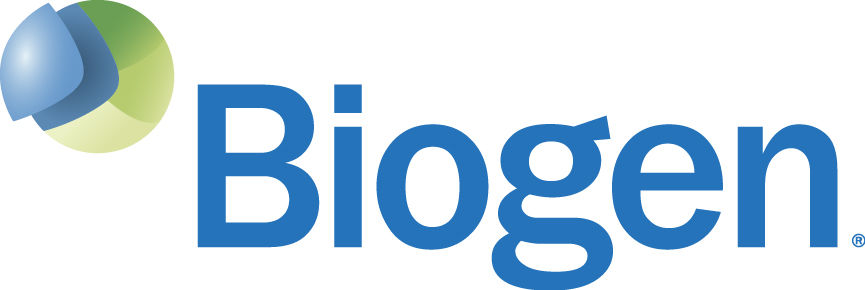预约演示
更新于:2025-05-16
ST-502
更新于:2025-05-16
概要
基本信息
原研机构- |
最高研发阶段临床前 |
首次获批日期- |
最高研发阶段(中国)- |
特殊审评- |
关联
100 项与 ST-502 相关的临床结果
登录后查看更多信息
100 项与 ST-502 相关的转化医学
登录后查看更多信息
100 项与 ST-502 相关的专利(医药)
登录后查看更多信息
2
项与 ST-502 相关的文献(医药)2022-06-01·Microbial drug resistance (Larchmont, N.Y.)
High Prevalence of ST502 Carrying an OXA-24 Carbapenemase gene in Carbapenem-Nonsusceptible Acinetobacter baumannii-calcoaceticus Isolates in Romania
Article
作者: Klaassen, Corné H.W. ; Yusuf, Erlangga ; Strepis, Nikolaos ; Tompa, Manuela ; Goessens, Wil H.F.
Background: Acinetobacter baumannii can cause difficult-to-treat infections because it can acquire extensive antimicrobial resistance mechanisms. We aim to describe the antimicrobial resistance pattern and the genetic basis of carbapenem-nonsusceptible A. baumannii isolates in a University Hospital in Romania, a country where multidrug-resistant A. baumannii is widespread. Methods: We collected 104 consecutive meropenem-nonsusceptible A. baumannii isolates from 104 patients (36% female, mean age [SD] of 63 [16] years) between May 2015 and August 2017 from a large tertiary center in Romania. Whole-genome sequencing of representative isolates from amplified fragment length polymorphism clusters was used to determine clonality and resistance patterns. Results: All isolates were resistant to piperacillin/tazobactam, ceftazidime, and ciprofloxacin; 88.5% to gentamicin; and 90.4% to trimethoprim/sulfamethoxazole. In contrast, 79.8% and 99.0% were susceptible to tobramycin and colistin, respectively. The only isolate resistant to colistin had an minimum inhibitory concentration (MIC) of ≥16 mg/L. The blaOXA-24 gene was detected in 79.1% and blaOXA-23 in 20.9% of the isolates. In one isolate, blaOXA-23 was copresent with blaOXA-24. ST502 (Oxford scheme) was the most prevalent sequence type and was exclusively associated with blaOXA-24. Conclusions: ST502 associated with blaOXA-24 was frequently observed in the region where carbapenem-nonsusceptible A. baumannii was found to be endemic. In these isolates, tobramycin and colistin might be the remaining therapeutic options. Due to differences in gentamicin and tobramycin resistance in these isolates, surveillance data should not group gentamicin, tobramycin, and amikacin together as aminoglycosides.
2012-11-05·Molecular pharmaceutics2区 · 医学
Acid-Labile mPEG–Vinyl Ether–1,2-Dioleylglycerol Lipids with Tunable pH Sensitivity: Synthesis and Structural Effects on Hydrolysis Rates, DOPE Liposome Release Performance, and Pharmacokinetics
2区 · 医学
Article
作者: Shum, Pochi ; Fujiwara, Shin-ichi ; Moase, Elaine ; Allen, Theresa M. ; González-Bonet, Andres ; Thompson, David H. ; Shin, Junhwa ; Malhotra, Guarov S. ; Hyun, Seok-Hee ; Grey, Jessica
A family of 3-methoxypoly(ethylene glycol)-vinyl ether-1,2-dioleylglycerol (mPEG-VE-DOG) lipopolymer conjugates, designed on the basis of DFT calculations to possess a wide range of proton affinities, was synthesized and tested for their hydrolysis kinetics in neutral and acidic buffers. Extruded ∼100 nm liposomes containing these constructs in ≥90 mol % 1,2-dioleoyl-sn-glycero-3-phosphoethanolamine (DOPE) produced dispersions that retained their calcein cargo for more than 2 days at pH 7.5, but released the encapsulated contents over a wide range of time scales as a function of the electronic properties of the vinyl ether linkage, the solution pH, and the mPEG-VE-DOG composition in the membrane. The in vivo performance of two different 90:10 DOPE:mPEG-VE-DOG compositions was also evaluated for blood circulation time and biodistribution in mice, using (125)I-tyraminylinulin as a label. The pharmacokinetic profiles gave a t(1/2) of 7 and 3 h for 90:10 DOPE:ST302 and 90:10 DOPE:ST502, respectively, with the liposomes being cleared predominantly by liver and spleen uptake. The behavior of these DOPE:mPEG-VE-DOG formulations is consistent with their relative rates of vinyl ether hydrolysis, i.e., the more acid-sensitive mPEG-VE-DOG derivatives produced faster leakage rates from DOPE:mPEG-VE-DOG liposomes, but decreased the blood circulation times in mice. These findings suggest that the vinyl ether-based PEG-lipid derivatives are promising agents for stabilizing acid-sensitive DOPE liposomes to produce formulations with a priori control over their pH responsiveness in vitro. Our data also suggest, however, that the same factors that contribute to enhanced acid sensitivity of the DOPE:mPEG-VE-DOG dispersions are also likely responsible for their reduced pharmacokinetic profiles.
4
项与 ST-502 相关的新闻(医药)2024-08-13
关注并星标CPHI制药在线
近日,罗氏旗下基因泰克与基因编辑先驱公司Sangamo Therapeutics, Inc.(简称Sangamo)达成合作协议,共同开发静脉注射基因组药物来治疗包括阿尔兹海默病在内的神经退行性疾病。
根据协议条款,Sangamo负责完成技术转让和某些临床前活动,基因泰克负责所有临床开发、监管互动、制造和全球商业化。基因泰克预计将向Sangamo支付5000万美元的前期许可费和阶段性付款。Sangamo还有资格获得高达19亿美元的开发和商业里程碑。
首次利好消息影响,Sangamo的股价上涨了29%。这次合作让原本挣扎在破产边缘的Sangamo成功“续命”。据Sangamo发布的最新财报,截至2024年6月31日,公司账上现金及其等价物仅余下2780万美元,勉强能够再维持3个月,至本年度第三季度。
作为基因治疗领域的先驱,Sangamo为何走到今天的地步?
做ZFN领域的孤勇者
Sangamo成立于1995年,总部位于美国加州Richmond。公司主要聚焦于基因组编辑、基因调控和细胞治疗平台技术。
目前基因编辑技术主要有三类:锌指核酸酶(ZFN)技术、TALEN(转录激活因子样效应物核酸酶)基因编辑技术、以及2020年获得诺贝尔奖的CRISPR-Cas9技术。
其中ZFN基因编辑技术发现于上世纪90年代末,是首 个问世的基因编辑工具。锌指(zinc finger)是一种小的蛋白质结构模体,其特征在于配合一个或多个锌离子以稳定折叠,形成手指状外观。锌指蛋白对基因调控起着重要作用,其能够识别DNA上的特定序列,而通过将不同的功能蛋白域与ZFP(锌指DNA结合蛋白)结合,可以让转录因子特异性地抑制或激活特定基因的表达。
值得一提的是,从一开始,ZFN基因编辑技术就被Sangamo公司垄断,近三十年来,Sangamo是该技术的主要专利持有者,获得了包括锌指蛋白设计、筛选、优化、实验室和临床应用相关的数个关键专利。由于Sangamo的研究和开发工作,ZFN在基因编辑领域取得了多项第一:第一个编辑人类细胞基因、第一个编辑体外基因和第一个编辑体内基因。
Sangamo公司在ZFN技术上的丰富经验,使其于2012年在纳斯达克顺利上市,并陆续完成三轮融资:2013年9月,融资742万美元;2018年2月,获得美国国家卫生研究院1100万美元拨款;2018年4月,获得加利福尼亚再生医学研究所800万美元拨款。
除此之外,Sangamo还收到制药巨头们抛出的橄榄枝。
2017年5月及2018年3月,辉瑞先后两次与Sangamo合作,分别开发A型血友病、肌萎缩性侧索硬化、额颞叶变性等疾病的新型药物;目前,两家合作开发的用于治疗A型血友病的giroctocogene fitelparvovec,已进入临床III期。同一年,赛诺菲子公司Bioverativ、吉利德子公司Kite均与Sangamo达成合作协议。
2020年2月,Biogen与Sangamo宣布达成一项全球独家合作协议,Biogen获得来自Sangamo的ST-501(用于治疗Tau蛋白病变,如阿尔茨海默病等)、ST-502(用于治疗包括帕金森病在内的突触核蛋白病),以及一个未披露靶点的神经肌肉疾病项目的全球独家权利。
2020年7月,诺华与Sangamo签订合作协议,将利用Sangamo的专有ZFN基因编辑技术开发并商业化基因疗法,解决包括自闭症(ASD)在内的三种神经发育障碍。
各大MNC的合作,为Sangamo带来源源不断的现金流,一时间,Sangamo成为资本市场的香饽饽。
Sangamo困于自建的专利堡垒
与CRISPR技术相比,ZFN基因编辑技术主要有基因修复方式多样、精准更换基因、对基因表达强度影响较小等优点。
虽然ZFN技术自问世以来,有多家研究机构试图对其进行优化,但Sangamo始终将ZFN整套技术体系的专利权牢牢掌握在自己手中,由于Sangamo的垄断,ZFN技术的临床转化远远落后于CRISPR技术。Sangamo在ZFN领域迟迟未见突破(至今未有产品获批上市),在授权合作上也迎来大溃败。
2022年,赛诺菲终止了合作协议,将镰状细胞病候选药物BIVV-003的开发权益退还给Sangamo;2023年,诺华表示将终止与Sangamo签署的一项研究基因调控疗法以治疗三种神经发育障碍疾病的协议。同一年,渤健也表示终止与Sangamo就治疗神经系统疾病的基因疗法达成的协议。
为了维持生存,Sangamo自2023年4月以来已经裁员360多名员工,并关闭了加州和法国的制造和研究设施。系列的临床挫折和不断变化的优先事项让投资者感到失望,Sangamo的股票(SGMO)自2020年底的近期高点以来已下跌超过95%。
靠罗氏成功续命,Sangamo能否迎来重生?
此次罗氏伸出的橄榄枝,对于现金流即将枯竭的Sangamo来说,无疑是救命稻草,有望支撑Sangamo运营至2025年第一季度。
发展至今,Sangamo尚拥有19条有积极进展的管线,适应症覆盖肿瘤、神经疾病、肠道疾病、单基因遗传病等领域。
目前进展最快的一款药物是与辉瑞合作开发的用于治疗A型血友病的基因疗法giroctocogene fitelparvovec,前不久已宣布该疗法的III期临床试验成功,达到了主要和次要终点。根据协议,达到某些监管和商业里程碑后,Sangamo有资格从辉瑞获得高达2.2亿美元的里程碑付款。
在CRISPR发明之前,Sangamo曾被视为基因编辑生物技术公司的鼻祖。但运营策略的不同,造成如今两种技术冰火两重天的局面。好在Sangamo已在不断拓展新方向,这家老牌基因疗法公司会有东山再起的一天吗?我们拭目以待。
主要参考资料:
1、Laity, J. H., Lee, B. M. & Wright, P. E. Zinc finger proteins: new insights into structural and functional diversity. Current opinion in structural biology 11, 39-46, doi:10.1016/s0959-440x(00)00167-6 (2001).
2、Biogen and Sangamo Announce Global Collaboration to Develop Gene Regulation Therapies for Alzheimer’s, Parkinson’s, Neuromuscular, and Other Neurological Diseases.
3、Carroll, D. Genome engineering with zinc-finger nucleases. Genetics 188, 773-782, doi:10.1534/genetics.111.131433 (2011).
END
END
END
END
【智药研习社直播预告】
来源:CPHI制药在线
声明:本文仅代表作者观点,并不代表制药在线立场。本网站内容仅出于传递更多信息之目的。如需转载,请务必注明文章来源和作者。
投稿邮箱:Kelly.Xiao@imsinoexpo.com
▼更多制药资讯,请关注CPHI制药在线▼
点击阅读原文,进入智药研习社~
财报临床3期基因疗法引进/卖出
2023-03-20
Pictured: Novartis Headquarters/Courtesy of Getty Images
Sangamo Therapeutics lost two powerhouse partners Friday after it reported that both Novartis and Biogen discontinued their partnerships studying gene regulation therapies in the neurology space.
Biogen and Novartis terminated the agreements following a strategic review, according to Sangamo’s SEC filing posted Mar. 13. Both collaborations will formally end in June 2023.
Sangamo will conduct a broader strategic review of its pre-clinical development assets and investigate alternatives for the development programs left behind by Biogen and Novartis. Depending on the result of its review, Sangamo could continue these programs internally or look for collaborators.
Neither Novartis or Biogen has reponded to BioSpace's request for comment.
As of year-end 2022, Sangamo had $307.5 million in cash, cash equivalents and marketable securities, down considerably from its $464.7 million balance in 2021. Still, the company reported that its funds would be enough to support operations for at least 12 months.
Sangamo representatives said the termination of the Novartis and Biogen partnerships shouldn’t affect its financial standing.
Zinc Finger Partnerships
Sangamo inked its partnership with Biogen in February 2020. For $350 million upfront and the promise of up to $2.37 billion in milestone payments, Biogen gained access to Sangamo’s genome regulation technology to advance candidates for up to 12 neurological and neuromuscular conditions.
Biogen ultimately selected four candidates: ST-501 for tauopathies, ST-502 for synucleinopathies including Parkinson’s disease, a third product for type 1 myotonic dystrophy and a fourth candidate for an undisclosed neurological disease gene target.
In July 2020, Sangamo signed to discover and develop gene regulation therapies for three neurodevelopmental conditions, including autism spectrum disorder. The Novartis deal was valued at $75 million upfront and up to $720 million in developmental and commercial milestones.
Beyond the effective termination dates, Sangamo will no longer be eligible to receive milestones and royalties from its partners, nor will Biogen or Novartis be obligated to reimburse research activities related to their respective neuro programs.
At the core of both the Biogen and Novartis partnerships was Sangamo’s proprietary zinc finger technology, which combines a DNA-binding domain with various functional domains like nucleases or transcription factors.
Sangamo has a deep library with thousands of zinc fingers, allowing the company to cater the design of each candidate to a specific therapeutic use.
基因疗法引进/卖出
2023-03-20
Harold Cunningham/Getty Images
Sangamo Therapeutics lost two powerhouse partners Friday after it reported that both Novartis and Biogen discontinued focusing on gene regulation therapies in the neurology space.
Pictured: Novartis Headquarters/Courtesy of Getty Images
Sangamo Therapeutics
lost two powerhouse partners Friday after it reported that both Novartis and Biogen discontinued their partnerships studying gene regulation therapies in the neurology space.
Biogen and Novartis terminated the agreements following a strategic review, according to Sangamo’s
SEC filing
posted Mar. 13. Both collaborations will formally end in June 2023.
Sangamo will conduct a broader strategic review of its pre-clinical development assets and investigate alternatives for the development programs left behind by Biogen and Novartis. Depending on the result of its review, Sangamo could continue these programs internally or look for collaborators.
Neither Novartis or Biogen has responded to
BioSpace’s
request for comment.
As of year-end 2022, Sangamo had
$307.5 million in cash, cash equivalents and marketable securities
, down considerably from its $464.7 million balance in 2021. Still, the company reported that its funds would be enough to support operations for at least 12 months.
Sangamo representatives said the termination of the Novartis and Biogen partnerships shouldn’t affect its financial standing.
Zinc Finger Partnerships
Sangamo
inked its partnership with Biogen
in February 2020. For $350 million upfront and the promise of up to $2.37 billion in milestone payments, Biogen gained access to Sangamo’s genome regulation technology to advance candidates for up to 12 neurological and neuromuscular conditions.
Biogen ultimately selected four candidates: ST-501 for tauopathies, ST-502 for synucleinopathies including Parkinson’s disease, a third product for type 1 myotonic dystrophy and a fourth candidate for an undisclosed neurological disease gene target.
In July 2020, Sangamo and Novartis
inked an agreement
to discover and develop gene regulation therapies for three neurodevelopmental conditions, including autism spectrum disorder. The deal was valued at $75 million upfront and up to $720 million in developmental and commercial milestones.
Beyond the effective termination dates, Sangamo will no longer be eligible to receive milestones and royalties from its partners, nor will Biogen or Novartis be obligated to reimburse research activities related to their respective neuro programs.
At the core of both the Biogen and Novartis partnerships was Sangamo’s proprietary zinc finger technology, which combines a DNA-binding domain with various functional domains like nucleases or transcription factors.
Sangamo has a deep library with thousands of zinc fingers, allowing the company to cater the design of each candidate to a specific therapeutic use.
基因疗法引进/卖出
100 项与 ST-502 相关的药物交易
登录后查看更多信息
研发状态
10 条进展最快的记录, 后查看更多信息
登录
| 适应症 | 最高研发状态 | 国家/地区 | 公司 | 日期 |
|---|---|---|---|---|
| 中枢神经系统疾病 | 临床前 | 法国 | 2022-01-30 | |
| 中枢神经系统疾病 | 临床前 | 法国 | 2022-01-30 | |
| 帕金森病 | 临床前 | 美国 | - | 2020-02-09 |
登录后查看更多信息
临床结果
临床结果
适应症
分期
评价
查看全部结果
| 研究 | 分期 | 人群特征 | 评价人数 | 分组 | 结果 | 评价 | 发布日期 |
|---|
No Data | |||||||
登录后查看更多信息
转化医学
使用我们的转化医学数据加速您的研究。
登录
或

药物交易
使用我们的药物交易数据加速您的研究。
登录
或

核心专利
使用我们的核心专利数据促进您的研究。
登录
或

临床分析
紧跟全球注册中心的最新临床试验。
登录
或

批准
利用最新的监管批准信息加速您的研究。
登录
或

特殊审评
只需点击几下即可了解关键药物信息。
登录
或

Eureka LS:
全新生物医药AI Agent 覆盖科研全链路,让突破性发现快人一步
立即开始免费试用!
智慧芽新药情报库是智慧芽专为生命科学人士构建的基于AI的创新药情报平台,助您全方位提升您的研发与决策效率。
立即开始数据试用!
智慧芽新药库数据也通过智慧芽数据服务平台,以API或者数据包形式对外开放,助您更加充分利用智慧芽新药情报信息。
生物序列数据库
生物药研发创新
免费使用
化学结构数据库
小分子化药研发创新
免费使用


